"The birth of the scooter coincided precisely with the post-war boom in the consumer economy. And along with the industrial boom came an explosion in what used to be called 'Commercial Art'. This was the age of the Ad Man. "

Youth Culture & the scooter…
ex Scootering magazine stalwart on how the scooter took on the world and won
No other vehicle has mobilised a youth culture like the humble motor scooter.
And this little machine didn’t just do it the once. It did it three times. Go on, think about it…
Yeah ok, so there were young rockers, but as a culture the rockers, greasers and ton-up boys were generally older than the teenage mods of the late 50s/early 1960s were.
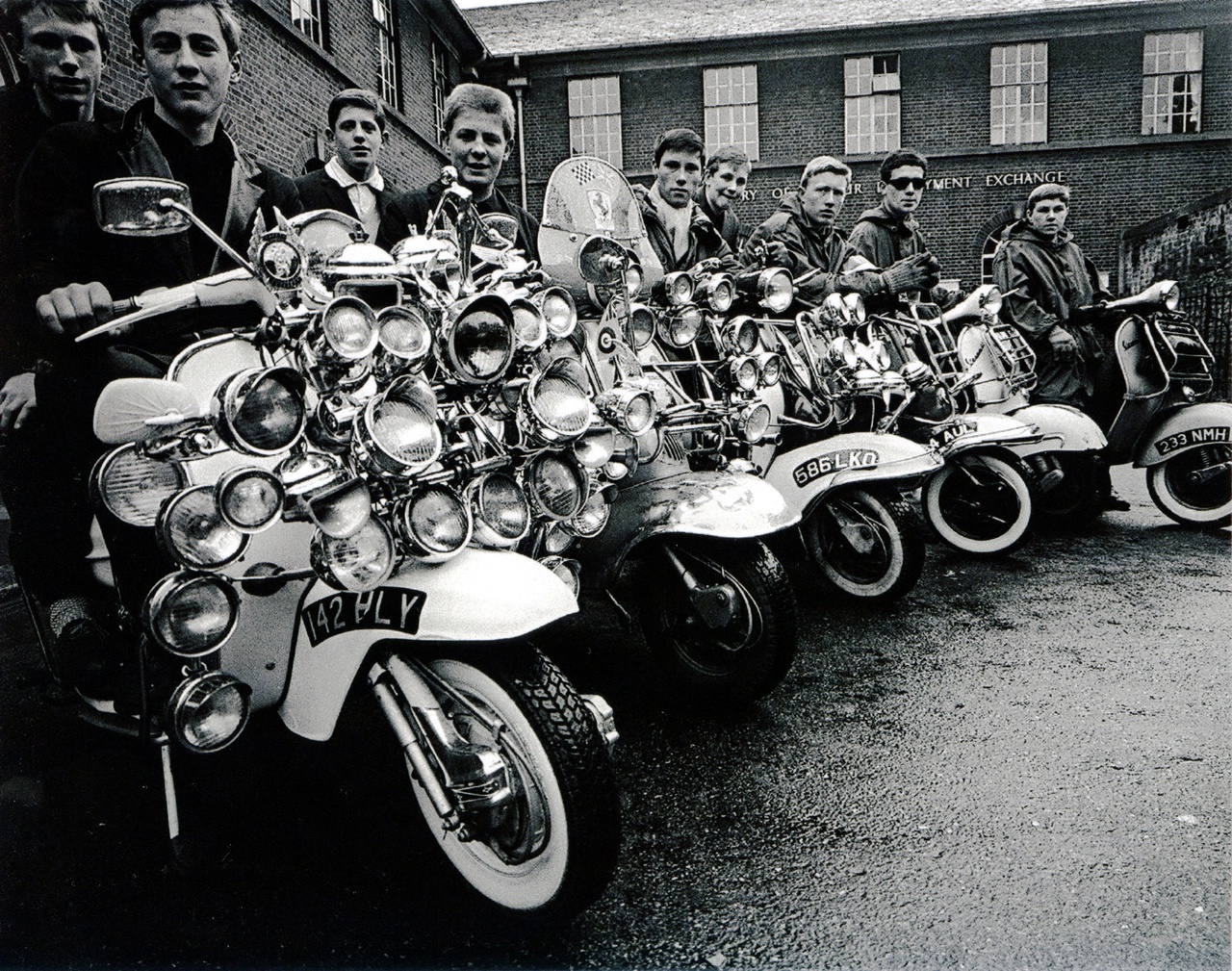
The thing with scooters and mods, you see, is that they were around at the right time for each other. As the older scooter enthusiasts and commuters sold their two-wheelers in favour of the new breed of small cars in which they could carry their new family around in, by coincidence the new young modernists were looking for cheap, cool, stylish European transport. As a result, for those on a budget, there were a plethora of cheap secondhand machines available.
For those aiming a little higher, the recent introduction of ‘hire purchase’ meant a new machine could be bought and paid off on the drip on a weekly or monthly basis. With interest, of course. Mods and scooters were, therefore, a match made in heaven – or at least made in the coffee bars and scooter showrooms.
Yes, maybe a Vespa or Lambretta doesn’t seem as macho as a Norton or BSA, but try telling that to the gangs of inner-city mods that destroyed what was originally a culture based on jazz music and European cool by fighting anywhere and everywhere a paparazzi camera was flashing, and they’d kick seven shades out of you.
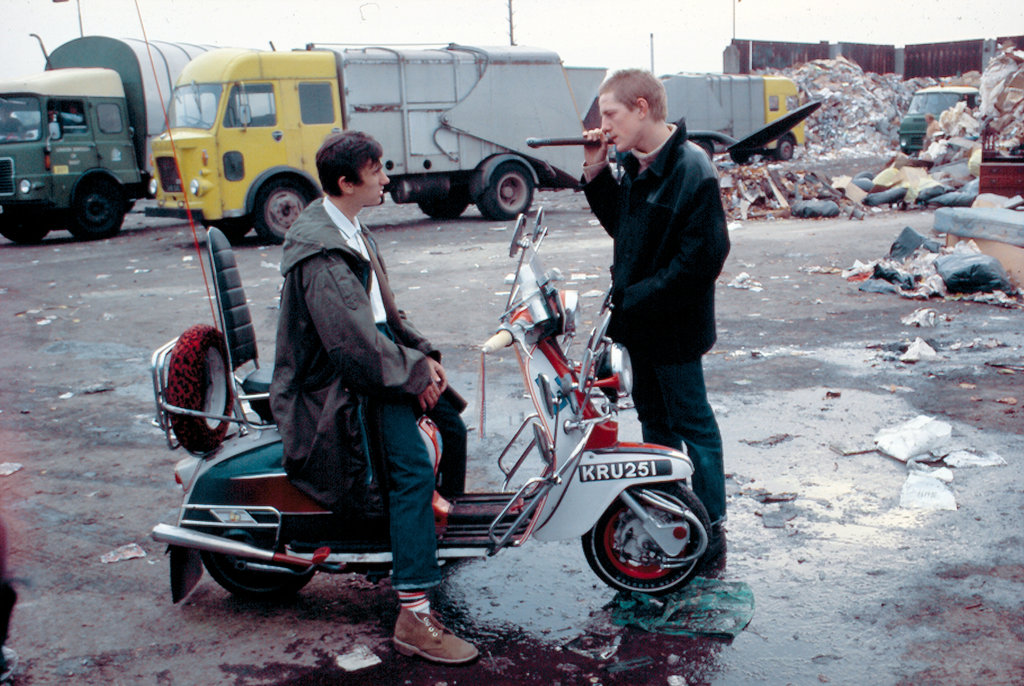
Fast forward to the late 1970s and the release of Quadrophenia in the cinemas – The Who’s rock opera that told the story of a young Mod in the 1960s – saw a mod revival and the second youth culture mobilised by scooters. Again there were still plenty of second-hand machines to be had, or a showroom full of the new Vespa P-Range which was both fast and reliable, and to those concerned, looked just as good decked out in an excess of lights and mirrors.
Please don’t mistake all scooter riders for mods though. That’s like accusing all motorcyclists of being rockers, Ewan & Thingy Adventurers or Sunday riders, suggesting that anyone who drives a Land Rover is obsessed with off-loading in quarries, or that all radio DJs are… well, you get my point.
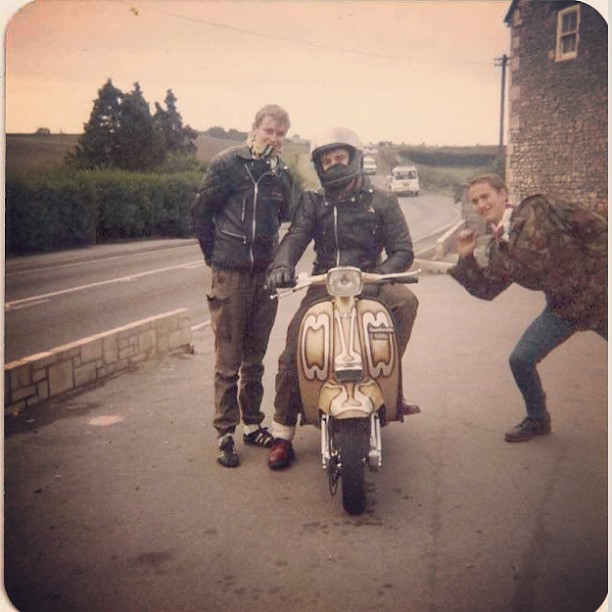
By the mid-80s scooterboys were the latest youth culture to embrace the stylish Italian two-wheelers for weekends away with like-minded souls. Vespas were stripped of excessive accessories, Lambrettas trimmed to the bone and chopped, customisation was in and the more outrageous the better. Tune the engine, fit a loud exhaust, alter the scooter’s appearance, and whatever you do don’t wear a boating blazer or parka!
Controversial maybe, but many scooterists today do take offence at being called mods. “Why’s that?” you may ask? Indeed, many scooterists evolved from the mod culture into scooterists, in the same way that there are a number of motorcyclists out there who cut their teeth on an Italian shopping bike with L-plates.
The thing with mod, however, is that it is a youth culture base around music and fashion first, the scooters are farther down the list. Those mods who did adopt scooter riding (and many of course used cars or public transport to get around), tended to decorate their scooters in a way that scooter enthusiasts often consider excessive.
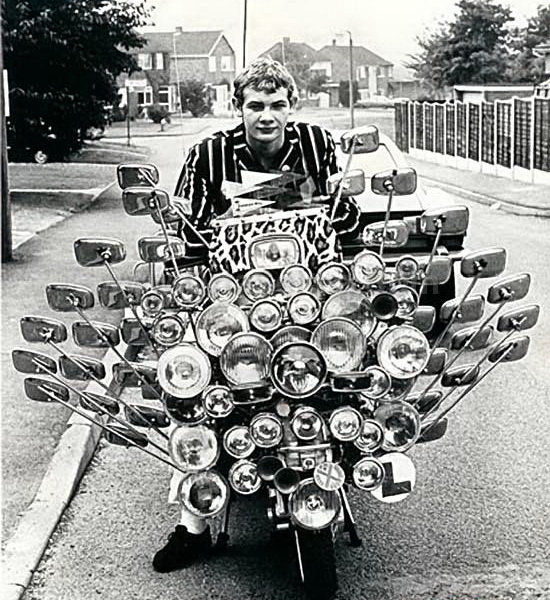
Each to their own, but if your idea of scooter fun is racing a highly tuned 2-stroke Lambretta around country lanes, burning rubber and overtaking Sunday bikers, then being lumped in with a load of poseurs, who often venture no farther than a fair-weather weekend ride-out, is not considered a compliment.
Equally, a mod who has spent hours accessorising and polishing their pride and joy, hardly wants to be tarred with the same brush as a scooterist with a matt black ratter that they rag around a field on Sunday.
And let’s not even go into the Vespa versus Lambretta debate. I own both, and enjoy the scooters I have equally for their own merits. Some however think the sun shines out of a Vespa’s tail pipe, while other believe the scooter world ended in 1971 when Innocenti ceased production of their Lambretta (despite factories around the world continuing productions Lambretta scooters – some arguably superior – into the late 1990s).
Personally, I think both have pros and cons, and I tend to favour a tuned Lambretta over a tuned Vespa, but the latter for reliability, faithfulness, and with regards to my favourite Vespa, a Rally 200, a simply outstanding scooter.
But then my liquid cooled 1960s Lambretta SX with rear sets and race pipe is one helluva laugh on the right roads, while you can’t beat a standard 1950s Lambretta D150 for plodding around the South downs on a beautiful spring day.
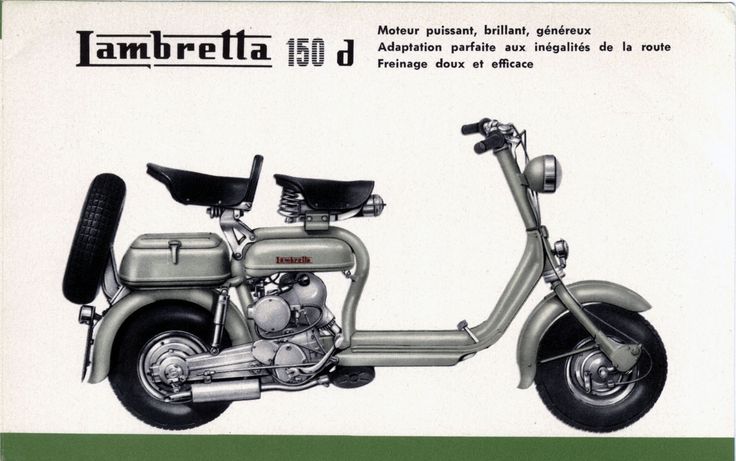
Why do we love these scooters so much then? I mean, how do you explain the appeal to a non-scooterist?
It’s difficult because, of course, beauty is in the eye of the beholder. However, the fact that you can find Vespa scooters in both design and science museums around the world means that it’s not just us that think they have something special.
Both the Lambretta and Vespa were a product of post-World War 2 Italy. There were also a number of scooters produced by similar companies in Japan and Germany at the time, as well as in countries on the winning side, yet it is the Italian marques that have stood the test of time. In fact, 2016 is the 70th anniversary of the Vespa brand and the PX125 in the current range is a 2-stroke powered scooter with a handlebar twist gear change and single sided forks – just like the first Vespa 98 model of 1946. That says something.
The Vespa was pretty much right from the start, whereas the first Lambretta of 1947 bares little resemblance to final models.
The later slimstyle Lambrettas are those favoured by most in the UK at least. However, you can understand why the brand disappeared in the 1990s when the Indian Government (who purchased the name and tooling from Italian firm, Innocenti, in the early 1970s) ceased production. Lambrettas are certainly over-engineered for the purpose for which they were originally designed, and a sturdy, reliable vehicle has little place in today’s disposable society.
That, I suppose, is part of the appeal. That despite the odds these little scooters took on the world and won.
In 1951 both Lambretta and Vespa broke world speed records with 125cc in both the 125cc and 175cc motorcycle classes. They are also vehicles designed to mobilise a nation that have continued to mobilise the masses for decades after. Vespa became a byword for scooter in many countries, while the Lambretta was marketed in such a way in the UK that it changed the way bike and car dealers operated ever since.
And they ARE stylish goddamit. I mean, the Italians created them! Go back to the original 60s mods, and for the purposes of a young lad attracting a member of the opposite sex, what better than a sleek Italian scooter with designer bodywork that not only looks good but protects your clothes from the engine, roads and elements while you ride? Add affordable customisation, whether shiny mod style pieces or angle grinder induced rat look, and you can display your personality on your ride. This is what creates youth culture. Style. Sex.
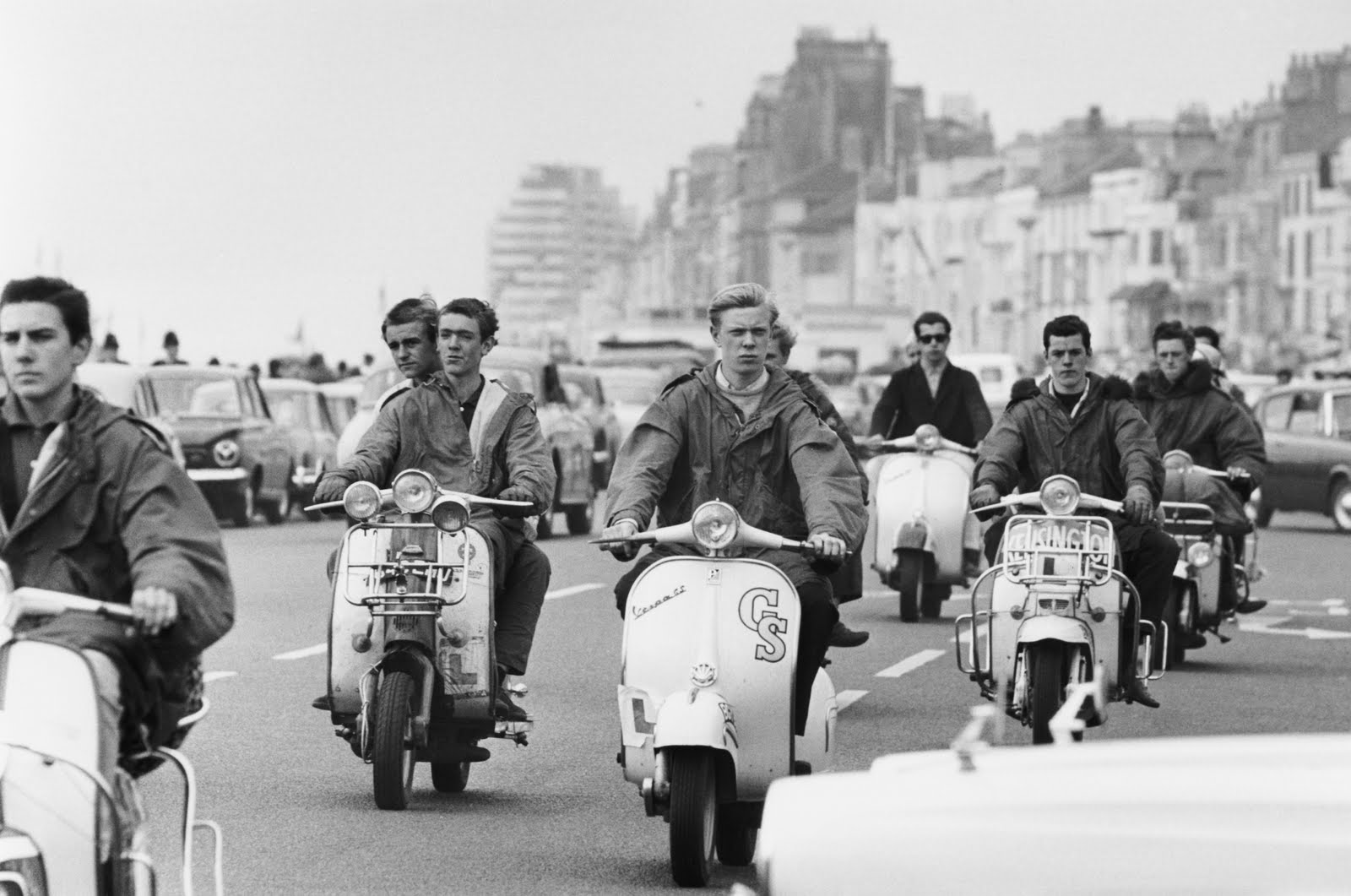
So what is better than, a Vespa or a Lambretta? I was asked the same question during an interview I did on BBC Radio 2 a year or so ago and I replied that the scooter I’d most like to own is a Ducati Cruiser. Now that’s put the cat amongst some pigeons in both the scooter and motorcycle world I reckon…
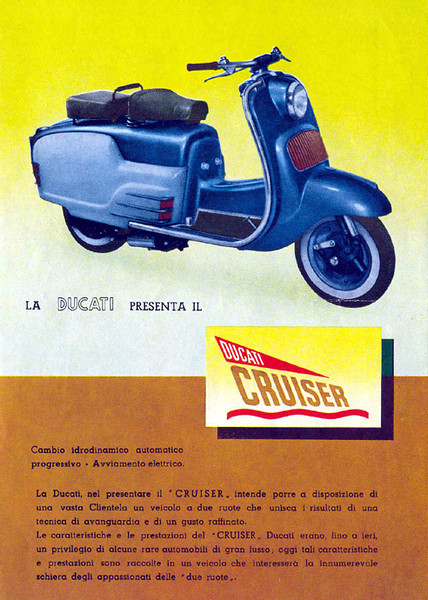
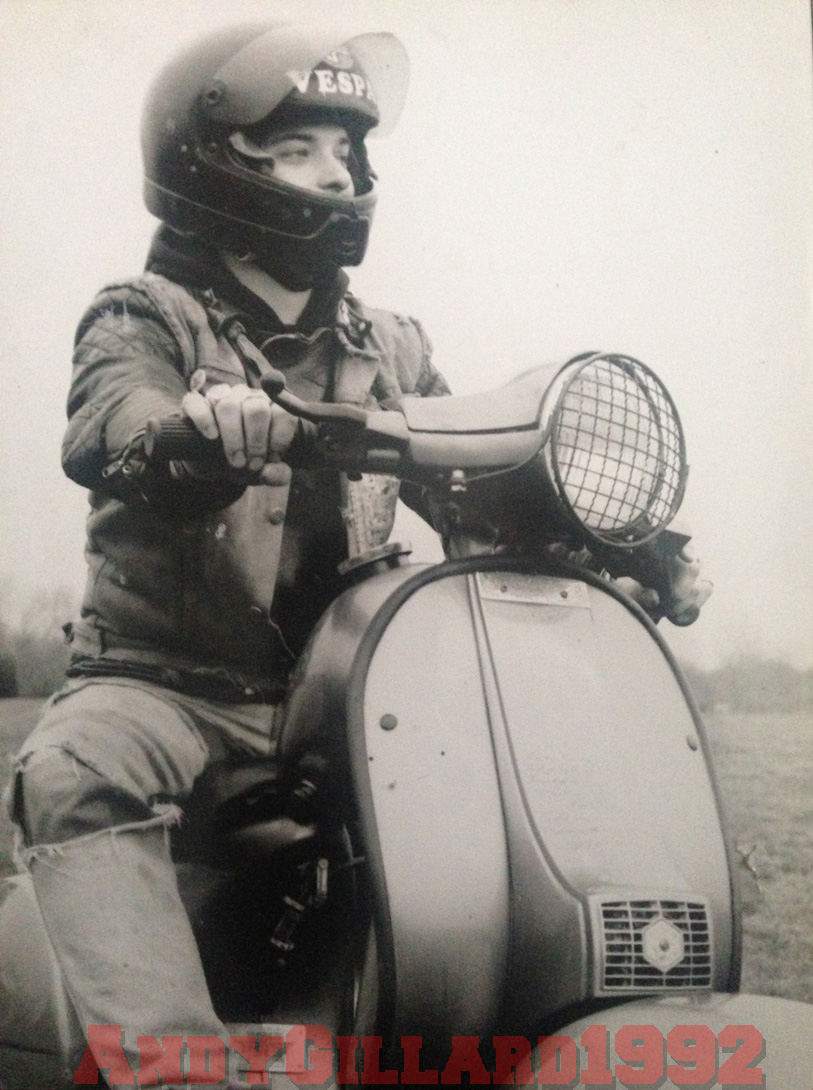
Andy circa 1990 on his Vespa chopper (photo by Liz Benjamin)
About the author
Andy has been riding scooters since he turned 16 in the 1980s, and has never looked back since (except when overtaking!). In the 1990s he began contributing to Scootering magazine, and spent 18 years working full-time on the title; the last 13 years as Editor, writer and photographer.
CLICK TO ENLARGE










I’ve said often over the last several decades that I was into Vespas long after, and long before they were cool.
I bought my first one in 1979, a P-200e. A most reliable scoot. I was creamed by a little old lady who turned left into me and plowed me to the curb. Totaled, a few broken ribs, but my helmet saved me. I bought another soon after, and put many many miles on that thing, and would still except that it was stolen in 2005 by some hoodlums who ruined it to the point that the police wouldn’t show me the photos of its recovery for fear that my heart would break.
My third was a farm-find that literally had weeds growing out of it. It took a long time to get around to bringing Lazarus back to life, but I did eventually, with the bulk of the salvation efforts performed by friends. I sold that last fall.
My fourth was an eBay purchase that despite my due diligence turned out to be a Viet Nam rehab. Uncle Ho was creamed by a woman running a stop sign. No helmet, concussion, totaled Vespa.
I now am riding my friend’s Stella for the duration of his residency in Macclesfield. I am grateful. But my riding joy has taken a beating since the last accident. What was once a near death wish has become sensible nervousness. I miss the days of drunken, BeBop-inspired all-night riding around the nooks and crannies of the Twin Cities.